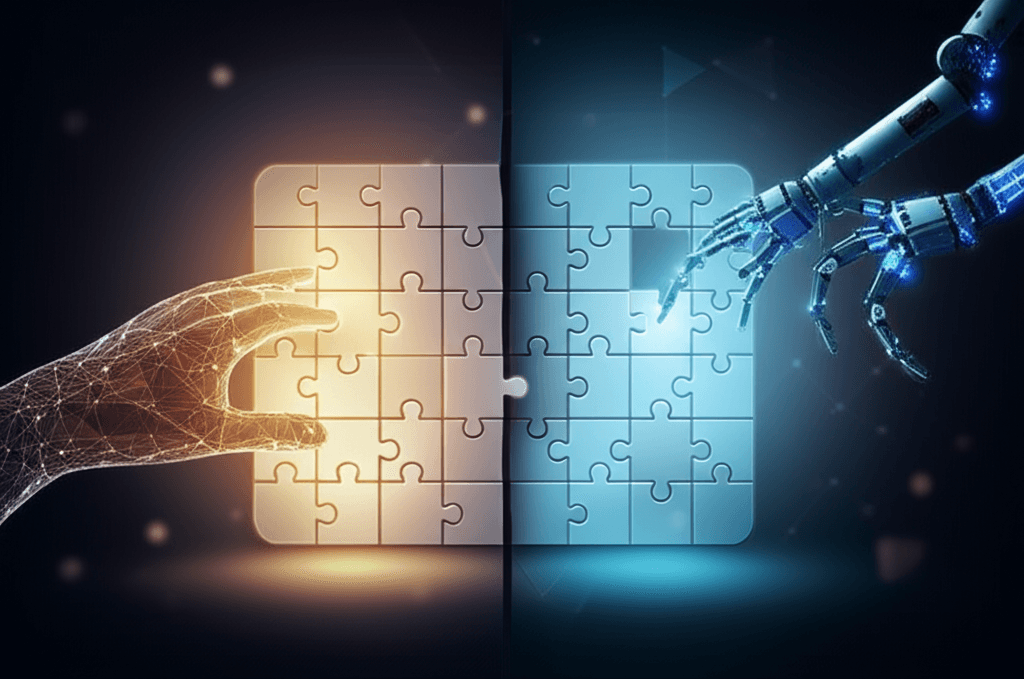AI Lacks Human-Like Generalization: New Benchmark Exposes AGI Hurdle
ARC-AGI-3: A new benchmark reveals AI's struggle with human-easy, adaptive challenges, showing scaling alone won't lead to AGI.
July 20, 2025

In the relentless pursuit of artificial general intelligence (AGI), a new benchmark has emerged, starkly illustrating the persistent gap between human cognition and the capabilities of even the most advanced large language models (LLMs). The ARC-AGI-3 benchmark, developed by a team including AI researcher François Chollet, moves beyond static question-and-answer formats to test an AI's ability to reason and adapt in entirely novel situations.[1] The results are clear: while humans find the challenges intuitive, today's AI systems struggle, revealing critical limitations in their problem-solving abilities and highlighting a crucial frontier for the AI industry.
The core of the ARC-AGI-3 benchmark lies in its novel, interactive format. Instead of evaluating pre-existing knowledge, it presents a series of simple-looking 2D puzzle games.[2][3] These games, set in a grid world, come with no instructions, forcing the test-taker to deduce the rules, controls, and objectives through trial and error.[1][3] This design intentionally mirrors how humans learn, through exploration, planning, and adaptation to new environments.[1][4] The benchmark is built on the principle of "skill-acquisition efficiency," a concept championed by Chollet that measures how quickly a system can learn new skills in unfamiliar domains.[5][6] By focusing on tasks that are easy for humans but difficult for AI, the benchmark aims to isolate and measure true generalization power, a key component of intelligence.[5] The creators argue that as long as a significant gap remains between human and AI performance on these types of tasks, we have not yet achieved AGI.[4][1]
The design philosophy behind ARC-AGI-3 deliberately excludes reliance on language, trivia, or vast reservoirs of training data.[4][1] The tasks are based on what are termed "core knowledge priors," which are fundamental cognitive abilities like object permanence and understanding cause and effect.[1][5] This is a significant departure from traditional benchmarks that often test for knowledge that can be memorized from massive datasets.[2][4] The interactive nature of ARC-AGI-3 also allows for a more nuanced evaluation of intelligence, assessing capabilities such as exploration, memory, planning over extended periods, and self-reflection.[4][2] Game environments provide an ideal medium for this, offering a balance of clear rules and goals while demanding complex planning and learning.[4] The benchmark’s developers contend that static tests do not have the capacity to measure the full spectrum of intelligence.[2]
Early results from the ARC-AGI-3 developer preview, which includes three interactive games, show a stark contrast between human and AI performance. Humans have been able to solve the games with relative ease, while AI systems have largely failed.[1][2] This outcome reinforces findings from previous iterations of the ARC benchmark, where even massive models like GPT-4 showed minimal improvement, struggling to surpass low single-digit scores while humans consistently scored above 95%.[7] This persistent difficulty for AI highlights that simply scaling up models and their training data is not a direct path to flexible, human-like intelligence.[7] The ARC benchmark series was created specifically to push research beyond this scaling paradigm and toward systems that can genuinely adapt to novelty.[7][5]
The implications of these findings are significant for the AI industry, which is heavily invested in the development of AGI. The ARC-AGI-3 benchmark serves as a crucial reality check, demonstrating that current approaches, while impressive in many areas, fall short in emulating the foundational aspects of human reasoning and problem-solving. It underscores the need for new research directions focused on "test-time adaptation," where AI models can modify their own processes to handle unfamiliar situations.[7] While there have been some claims of specific AI agents, like a new ChatGPT agent, managing to solve one of the initial puzzles, the overall trend points to a significant hurdle for current AI architectures.[2][1] The ARC Prize Foundation, which oversees the benchmark, posits that the true measure of AGI will be when it becomes impossible to devise tasks that are simple for humans but challenging for AI.[6][8]
In conclusion, the ARC-AGI-3 benchmark provides a compelling and sober assessment of the current state of artificial intelligence. Its emphasis on interactive reasoning and skill acquisition in novel environments exposes a fundamental weakness in today's leading AI models. While these systems excel at tasks dependent on learned patterns from vast datasets, they lack the fluid, adaptive intelligence that allows humans to navigate and understand new challenges effortlessly. The benchmark not only highlights this gap but also provides a clear and valuable target for future research. It signals to the AI community that the path to AGI is not simply about bigger models, but about cultivating the kind of efficient, general-purpose learning that remains, for now, a distinctly human trait. The journey toward true artificial general intelligence, as ARC-AGI-3 demonstrates, requires a deeper understanding and replication of the core principles of learning and reasoning itself.